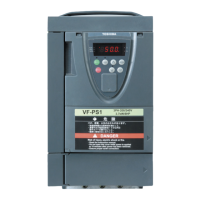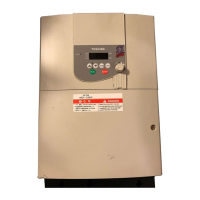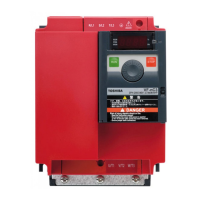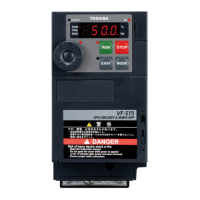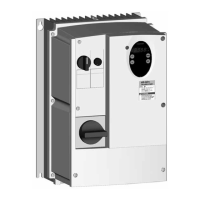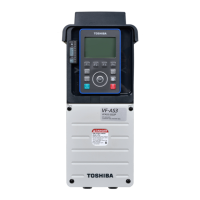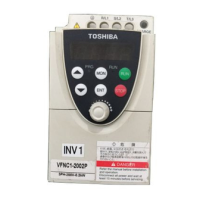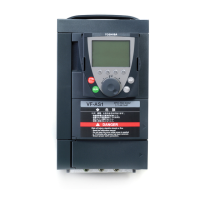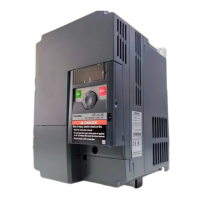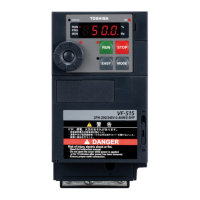E6581172①
12
4.4. Detailed description of light-load high-speed operation
Relation between parameters of F331~F341 and light-load high-speed operation is described here.
Timing chart as shown in the next page indicates an example of forward run in automatic light-load high-speed
mode (F330=2).
Based on this example, the operation is detailed.
The judgement of light load/heavy load in light-load high-speed operation is performed by detecting the absolute
value of torque current. The criteria can independently be set for forward and reverse runs, respectively. The
following operation will be performed after start-up.
1) After start-up (A in the figure), the average of load torque current will be calculated during light-load high-speed
operation load detection time (F333) (interval C in the figure) after light-load high-speed operation waiting time
(F332) (interval B in the figure). If a result of calculation is less than switching load torque current during
forward/reverse run F335 (F338) (D in the figure), it will be determined to be light load to perform high-speed
operation.
2) In case of light load, acceleration will be performed up to high-speed operation frequency (set with automatic
light-load high-speed operation frequency (F314) for F330=2). Heavy load during acceleration is detected in the
interval (F in the figure) from the point when operation frequency reaches the achieved speed range (E in the
figure) till light-load high-speed operation load waiting time to complete acceleration (F332).
In this interval (G in the figure), if load torque current exceeds heavy load torque current during acceleration in
forward direction (reverse direction) for more than light-load high-speed operation heavy load detection time
(F334), it will be determined to be heavy load during acceleration, causing light-load high-speed operation to be
stopped (N in the figure indicates an example of stopped high-speed operation due to the judgement of heavy
load during acceleration in forward direction).
In the constant-speed interval of high-speed operation, the average of load torque current will be calculated
during light-load high-speed operation heavy load detection time (F334) (interval H in the figure). If it exceeds
heavy load torque current during constant speed in forward direction (reverse direction) F337 (F340), high-speed
operation will be stopped (M in the figure indicates an example of stopped high-speed operation due to the
judgement of heavy load during constant speed in forward direction).
3) If the directed frequency value is set to less than light-load high-speed operation switching lower limit frequency
(F331) during high-speed operation (J in the figure), deceleration will be performed toward the directed
frequency value (interval K in the figure).
When the operation frequency reaches below light-load high-speed operation switching lower limit frequency
(F331), light-load high-speed operation will be reset. In this case, the operation of reacceleration will be the same
as the above in item 1.
However, if the directed frequency value is again set to (F331) or higher before the operation frequency reaches
below light-load high-speed operation switching lower limit frequency F331 (L in the figure), light-load high-speed
operation will be continued.
Once high-speed operation is stopped due to heavy load detection, even with light load detected again, no
light-load high-speed operation will be resumed unless the operation signal is turned OFF or the operation
frequency is lowered under light-load high-speed operation switching lower limit frequency (F331).

